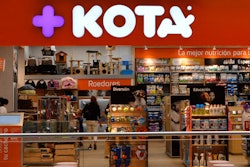
As yet another indication that human food trends impact pet food, recent data from Nielsen IQ shows the influence of consumers’ ongoing focus on health and wellness, their own plus that of their families—including the furry members. That focus has only intensified during and since the pandemic.
“More than US$175 billion is spent in a year in the U.S. on health and wellness products, proving that health and wellness is no longer a channel but a lifestyle,” read an article on the NielsenIQ site. “As a result, pet parents have started treating pets as another member of the family, making purchase decisions for their pets that align with their personal purchase decisions.”
I would argue that pet owners started treating their pets as members of the family long before the pandemic, but I agree with the article’s author (unnamed) that, as pandemic-driven lockdowns caused owners to spend more time at home with their pets, the animals’ health and wellness became even more important.
Popular pet food categories, search terms
In addition, the pandemic years have only accelerated many pet food trends and growth areas that were on the march before—and that includes ones linked to human food trends. According to NielsenIQ, it also translates to the terms pet owners are using when searching for pet food.
For example, popular human food trends like vegan and high protein are showing up among pet food searches. From December 2020 to January 2022, search terms associated with vegan pet food ranked 58th among the most searched terms in a tracking product called NielsenIQ Label Insight Trending Attributes. Similarly, high protein ranked 54th. “In past years, these terms never cracked the top 100” for pet food, the article says.
Raw was another high-ranking search term for pet food, coming in at 43rd, after also not appearing in the top 100 previously. For a related pet food format, refrigerated pet food, search terms have increased 61% since March 21, despite the fact that the sub-category comprises only 16% of total pet food products, according to NielsenIQ data.
Yet, as has been the case since before the pandemic, raw frozen and refrigerated pet foods continue to grow since 2020: 36% for frozen and 70.3% for refrigerated since 2020 in terms of number of products. “We predict these trends will continue to take shape in the coming years as brands like FreshPet and Tylee’s are now conveniently distributed by e-commerce retailer Chewy,” the NielsenIQ article says.
Pet owners searching for products to address conditions
With functional ingredients in pet food and other pet products, NielsenIQ claims an increasing interest among pet owners doesn’t manifest as specific searches; rather, owners are searching using terms “at the descriptive category level to combat the ailment they are seeking to treat.” An example is “calming” pet products versus specific ingredients like CBD and chamomile: Calming searches have increased by 42% since March 2021, while there has been no noticeable change for CBD or chamomile.
Similar descriptive, condition-related or ingredient attribute searches that are on the rise among pet owners—all experiencing double-digit growth since March 2021—include dental and breath health, sensitive stomach and human grade.
















